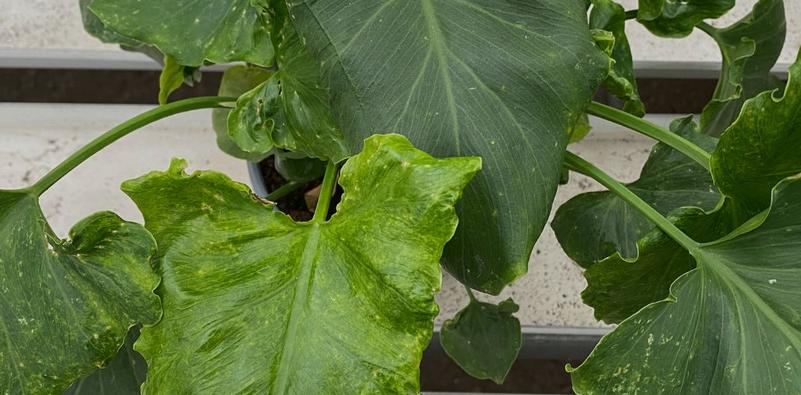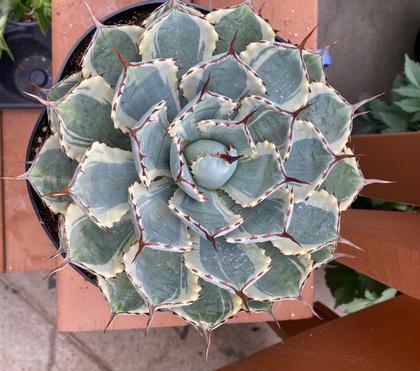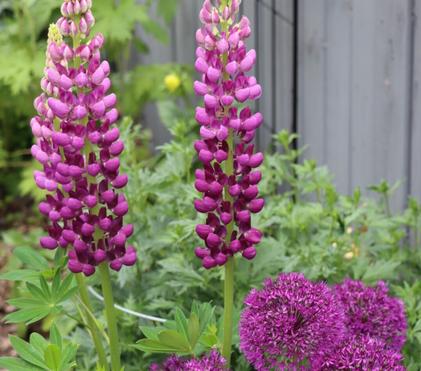Thrips
This may turn out to be a challenging year for gardeners. The heat in May was great for getting vegetable gardens and containers started early, but the dry conditions that have come along with the prolonged heat are providing the perfect conditions for certain insects to proliferate.

Thrips
I am seeing a lot of posts in gardening groups about plants with deformed leaves and customers are phoning to ask why their geranium flowers are drying up and falling off. There could be a couple of reasons why that is happening, but considering the recent weather, thrips are a very likely culprit.
I noticed last evening that my otherwise healthy Calliope geranium had one dried and misshapen flower bud. I looked a little closer and sure enough, there were a lot of dark sand-like specks on the leaves. The dark specks were frass (insect poop) from the thrips feasting on the geranium bud. An even closer look revealed minuscule dark insects moving around. Yes, my Calliope has thrips.
What is a thrip? It’s a cigar-shaped insect about 2 mm long that causes discoloration and distortion of plant stems, leaves, and flowers by sucking the plant tissue dry. Damage is largely cosmetic, and plants rarely die from a thrip infestation unless it is already in poor condition. There are many kinds of thrips, but they are so small that a microscope is needed for accurate species identification. However, the one most likely to affect your plants is the western flower thrip. They show up when conditions are hot and dry and will do the most damage to plants that are stressed. So, if you have a plant that should be getting shade in the hottest part of the day but is planted out in full baking sun it may be more susceptible to thrip attack. That said, some of our cooler weather plants may simply be stressed because it is so hot and dry. And some gardens may just have a higher thrip population than others.
The first question we get from customers is: what can I spray my plants with? In this case, nothing, except perhaps a spray of water to increase humidity around the plant and to wash the frass off. A thrip infestation never warrants chemical or other applied control in the home garden because the damage is already done by the time it becomes evident.
But there must be something I can do? Yes, there is – and this is always the very first step to take when you see significant damage to your plants. Identify the source of the damage. Has it been chewed? Are the flowers or foliage curled, deformed, or dried out? Are there track marks? Is it fungal or bacterial or is it an insect? You cannot address a problem correctly if you do not know the cause. I view leaf damage as evidence that the plant is useful to some small creature, so I choose to appreciate that the plants in my garden are contributing to a healthy ecosystem.
But let us get back to thrip control. Now that you have identified the cause of the damage as thrips, remove any affected leaves and flower buds and dispose of them in the garbage. Then you are going to sit back, have a nice cool drink in the shade, and let the predatory insects in your garden manage the thrip population. Every healthy garden has an invisible army of spiders, lacewings, predatory mites, minute pirate bugs, and parasitic wasps that keep insect pests under control. There are also predatory thrips that prey upon other species of thrips, so they aren’t all bad! These beneficial insects will provide longer and more effective suppression of a thrip infestation than anything you can purchase or apply. As summer progresses, observe which plants in your garden are most affected, and make a note to select plants for next year that are resistant or less attractive to them.

